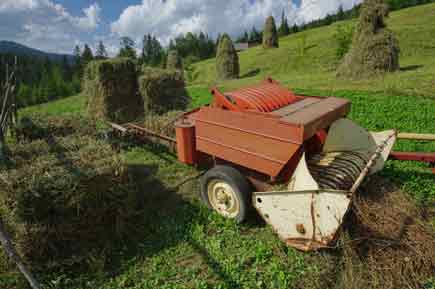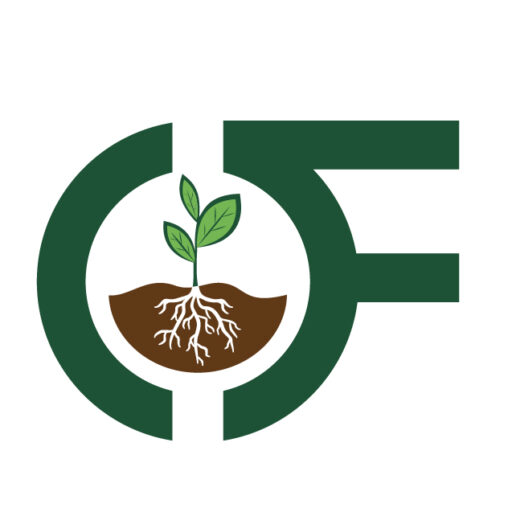What has Changed with Hay Production and Feed Technology?
The world of agriculture is constantly evolving, driven by the need for increased efficiency, sustainability, and improved yields. One area where innovation has made a significant impact is in hay production and feed technology. Farmers are embracing new techniques, machinery, and technologies to produce higher-quality hay, reduce waste, and provide better nutrition for their livestock. We will explore some of the latest innovations in hay production and feed technology that are transforming the industry’s regulations.

(Hay processing machine.)
1. Precision Farming and Data Analytics
Precision farming, also known as precision agriculture or smart farming, is a game-changer in the world of average hay production per acre. It involves the use of advanced technologies, such as GPS-guided tractors and drones, to collect data on soil conditions, crop health, and yield potential. This data is then analyzed to make informed decisions about when to cut, bale, and store hay.
By pinpointing the optimal time for harvesting, farmers can maximize the nutritional value of their hay while minimizing the risk of spoilage or mold. This precision also helps reduce fuel and labor costs, making hay production more sustainable and cost-effective.
2. Improved Hay Mowers and Conditioners
Innovations in hay production equipment like hay mowers and conditioners have significantly increased the efficiency of cutting and preparing hay for baling. These machines are now equipped with features such as adjustable cutting heights, wider cutting widths, and enhanced conditioning systems.
Adjustable cutting heights allow farmers to tailor the length of their hay, ensuring optimal quality and nutrition. Wider cutting widths enable faster mowing, reducing the time it takes to cover a field. Conditioning systems crimp or crush the stems of the plants, which speeds up drying and improves overall hay quality.
3. High-Density Balers
High-density balers represent a groundbreaking advancement in hay baling and storage methodologies, revolutionizing traditional practices. By compressing hay into denser and heavier bales, these cutting-edge machines significantly reduce storage space requirements and transportation costs, offering unparalleled efficiency and cost-effectiveness for farmers. Furthermore, the compact nature of the bales renders them less susceptible to spoilage and weather-related damage, ensuring hay quality is preserved throughout storage and transportation processes.
In addition to their space-saving benefits, high-density balers come equipped with advanced features such as bale weighing systems and moisture sensors. These technological innovations provide farmers with invaluable real-time data, enabling them to monitor and maintain optimal hay quality standards. With access to accurate moisture levels and bale weights, farmers can make informed decisions, ensuring that their hay meets industry standards and can be marketed more effectively. As a result, high-density balers not only streamline hay production processes but also empower farmers with the insights needed to maximize profitability and success in the agricultural market.
4. Hay Preservatives and Additives
It’s evident that farmers are increasingly turning to hay preservatives and additives to elevate hay quality and mitigate spoilage risks. These products play a pivotal role in preserving hay freshness by inhibiting mold and bacteria growth, ensuring optimal quality from baling to storage.
One notable trend in hay preservation is the emergence of environmentally friendly formulations that prioritize both efficacy and safety for livestock consumption. These innovative additives not only safeguard hay integrity but also align with sustainable agricultural practices, resonating with environmentally conscious farmers and consumers alike.
By extending the shelf life of hay, these preservatives enable farmers to store hay for longer periods, catering to fluctuating demand and ensuring a steady supply throughout the year. This flexibility empowers farmers to maximize productivity and capitalize on market opportunities, ultimately driving business growth and success.
5. Drying Technologies
Efficient drying methods are paramount for optimizing high-quality hay production per acre. While traditional sun-drying techniques are susceptible to weather fluctuations and can be time-consuming, new advancements in drying technologies are revolutionizing the way farmers process their forage.
Leading the charge are hay dryers, which leverage heated air to swiftly reduce moisture levels in freshly cut hay. This innovative approach not only accelerates drying times but also enhances nutrient preservation, ensuring the hay retains its nutritional value throughout the process.
In addition to hay dryers, in-bale hay preservatives offer an alternative solution by directly treating bales during the baling process. This method significantly diminishes the reliance on extended drying periods, providing farmers with greater flexibility and efficiency in hay production.
6. Improved Storage Solutions
Proper storage is critical to maintaining hay quality over time. Innovations in hay storage solutions include covered storage facilities, hay sheds, and plastic wrapping for bales. These options protect hay from exposure to rain, sunlight, and moisture, reducing spoilage and preserving nutritional value.
Covered storage facilities provide protection from the elements and allow farmers to store larger quantities of hay for extended periods. Hay sheds are a cost-effective option that offers shade and protection while minimizing construction costs. Plastic wrapping, commonly used for baleage production, creates an airtight seal around bales, preserving freshness and nutritional value.
7. Forage Analysis Technology
Modern forage analysis technology has made it easier for farmers to assess the nutritional content of their hay and make informed feeding decisions. Portable near-infrared (NIR) spectrometers and laboratory analysis services are readily available to determine key parameters such as protein, fiber, and moisture content.
This information allows farmers to create customized feeding plans tailored to their livestock’s specific needs. By providing the right balance of nutrients, farmers can optimize animal health, growth, and milk production while minimizing waste.
8. Research and Breeding
The landscape of hay production has been transformed by remarkable advancements in plant breeding and research, yielding a crop of hay varieties boasting enhanced yield, disease resistance, and nutritional profiles. These breakthroughs herald a new era for farmers, offering cultivars capable of flourishing across diverse soil and climate conditions, thus ensuring more dependable and consistent yields.
One notable example lies in the development of alfalfa varieties fortified with heightened resistance to prevalent pests and diseases. By bolstering natural defenses, these cultivars diminish farmers’ reliance on chemical treatments, fostering environmentally sustainable agricultural practices. Moreover, select varieties have been meticulously bred to exhibit elevated protein content, presenting a boon for livestock nutrition. This nutritional superiority not only promotes animal health and well-being but also underscores the pivotal role of innovative breeding techniques in advancing agricultural productivity.
9. Sustainable Practices
Innovations in hay production are not just about increasing yields; they also focus on implementing sustainable practices that yield benefits for both the environment and farmers. Techniques such as no-till farming and cover cropping have emerged as game-changers in this regard, offering multifaceted advantages.
No-till farming, characterized by minimal soil disturbance during planting, plays a pivotal role in preserving soil health and vitality. By minimizing soil disturbance, this method helps retain crucial moisture and nutrients, fostering a more conducive environment for plant growth. Furthermore, it aids in reducing erosion, preserving soil structure, and promoting long-term sustainability.
Cover cropping, another integral sustainability practice, involves planting non-cash crops between hay production cycles. These cover crops serve as protective layers, shielding the soil from erosion while also enhancing its quality through nutrient replenishment and organic matter accumulation. Additionally, cover crops contribute to carbon sequestration, playing a crucial role in mitigating climate change effects.
10. Automation and Robotics
Automation and robotics are gradually making their way into hay production. Automated systems for bale handling, stacking, and loading are reducing labor requirements and improving efficiency on farms.
Robotic technologies, such as autonomous tractors and harvesters, have the potential to revolutionize hay production by increasing accuracy and reducing the need for human intervention. These innovations are still in the early stages of adoption but hold promise for the future of hay farming.
Conclusion
Innovations in hay production process and feed technology are reshaping the agricultural landscape, allowing farmers to produce higher-quality forage more efficiently and sustainably. Precision farming, improved machinery, high-density balers, drying technologies, and advanced forage analysis are just a few examples of how technology is driving progress in the industry. As farmers continue to embrace these innovations, the future of hay production looks brighter than ever, promising better nutrition for livestock, reduced waste, and a more sustainable approach to farming.

